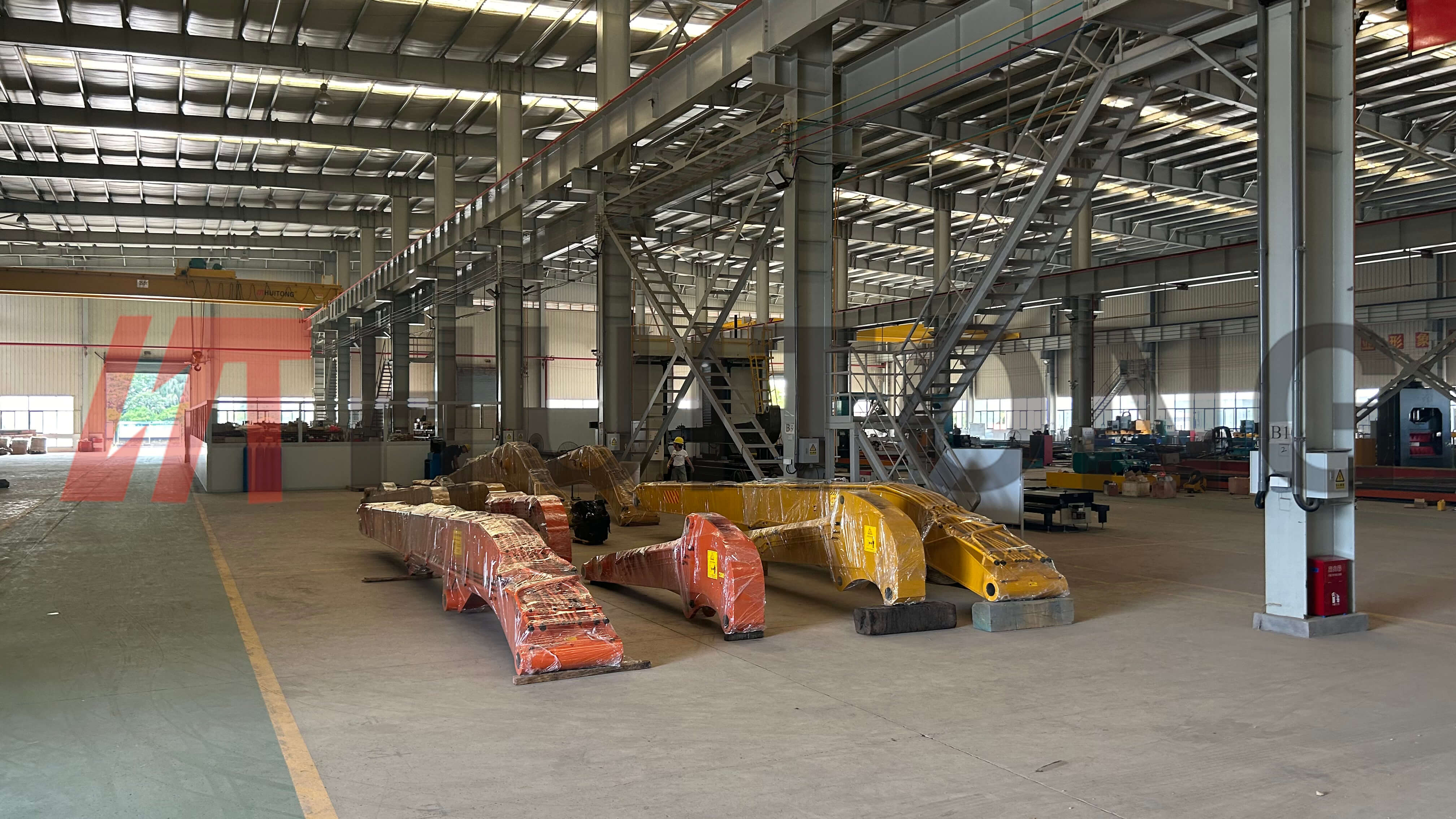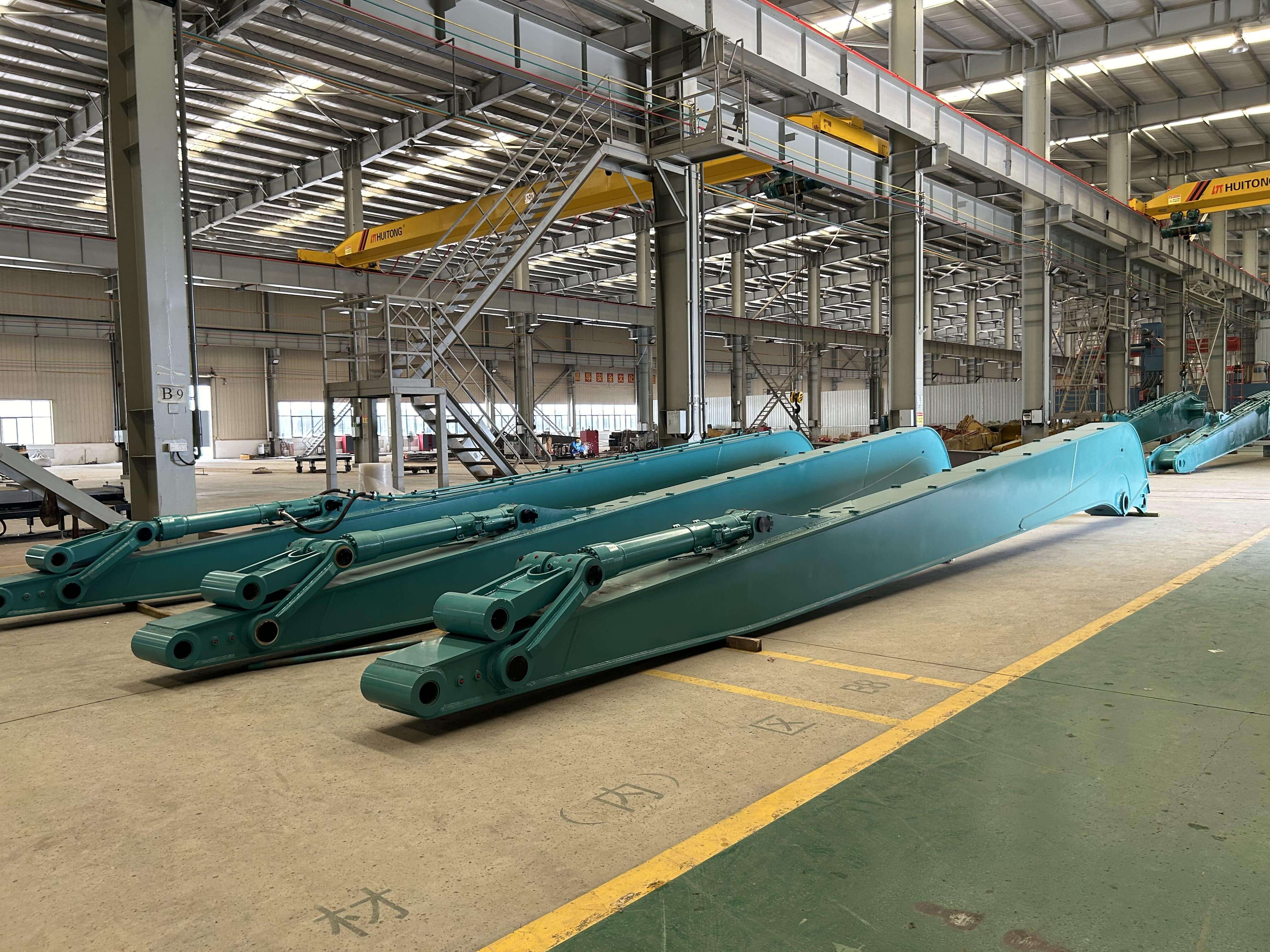 HuiTong
HuiTong  2025-06-13
2025-06-13
In the fields of construction engineering, mining, municipal renovation, etc., the operating efficiency of the excavator directly affects the progress of the project and cost control. As the core modification component of the excavator, the excavator long front arm is gradually replacing the standard arm with its unique design and functional advantages, becoming the "efficiency engine" in complex construction scenarios. This article will deeply analyze how the long front arm can achieve efficiency leaps from five dimensions: operating scope, construction efficiency, safety, scene adaptability and economy, and form a sharp contrast with the standard arm.

The limitations of the standard arm are its fixed length and limited operating radius. For example, when the standard arm is excavating deep foundation pits or demolishing high-rise buildings, it is often forced to frequently move the equipment because it cannot reach the target area, resulting in a waste of time.
Advantages of excavator long front arms:
Horizontal extension: The operating radius of the two-stage excavator long front arm can reach 14-27 meters, and the three-stage can even cover more than 28 meters, easily reaching areas that are difficult for traditional equipment to reach (such as the center of the river and the bottom of the deep pit).
Vertical expansion: In high-rise demolition, the three-stage extension arm can raise the working height to more than 20 floors, reducing the need to build scaffolding or aerial platforms.
Deep excavation: The internal telescopic arm design supports vertical excavation depths of up to 26 meters, far exceeding the conventional capabilities of the standard arm.
Comparative example:
In river dredging projects, the standard arm needs to move the equipment multiple times to complete the cleaning of the central area, while the excavator long front arm can cover the entire river surface in a single operation, increasing efficiency by more than 50%.
Standard arms are often forced to interrupt operations due to space limitations in narrow or complex terrain, resulting in process fragmentation. The long front arm achieves "one machine for multiple uses" through the following designs:
1. Multifunctional adaptation: It can be matched with accessories such as breaker hammers, hydraulic shears, shell buckets, etc. to meet multiple needs such as excavation, crushing, demolition, and grabbing, reducing the frequency of equipment replacement.
2. Reduced mobility costs: In land reclamation or subway tunnel projects, the long front arm can cover a large range of work surfaces without frequent adjustments to the fuselage position, increasing the daily workload by 30%-50%.
3. Precise control: High-strength wear-resistant steel (such as HARDOX) and precision hydraulic systems are used to ensure stability and response speed under long-distance operations, avoiding repeated operations caused by jitter.
Data comparison:
A municipal project used a standard arm to complete the excavation of a subway tunnel in 30 days, while the long front arm only took 18 days, shortening the construction period by 40%.
Standard arms require operators to work at close range in dangerous environments (such as near high-voltage lines and demolition of dangerous buildings), and safety hazards are prominent.
Solutions for long front arms:
Remote control: The three-stage long front arm can safely dismantle buildings with more than 20 floors, and the operator is away from the risk area of collapse.
Balance optimization: Through counterweight adjustment (such as 30-ton models with 18-meter arms do not require additional counterweights) and reinforced structure (Q345 steel), the stability of the fuselage during long-arm operation is ensured.
Intelligent protection: Some high-end models are equipped with automatic limit systems and load sensing devices to prevent overload and overturning.
Case verification:
In a mining project, the excavator long front arm reduced the accident rate by 60% due to the reduction of manual entry into high-risk areas.

The standard arm is only suitable for conventional earthwork operations, while the long front arm is adapted to a variety of scenarios through modular design:
Urban transformation: The four-section excavator long front arm completes pipeline laying in narrow streets to avoid damage to surrounding buildings.
Mining: The wear-resistant block design extends the life of accessories, and the large-capacity bucket improves the efficiency of ore loading.
Special terrain: The sliding arm design maintains efficient excavation in swamps or steep slopes to avoid the risk of equipment collapse.
Economic comparison:
Although the cost of the excavator long front arm modification is high (the unit fee can be up to 5 times that of the standard arm), it reduces equipment rental and labor input in complex projects, and the overall cost is reduced by 20%-30%.
With the iteration of technology, the long front arm is transforming from "mechanical extension" to "smart tool":
Automated adjustment: Real-time monitoring of load and terrain through sensors, automatic adjustment of arm length and angle.
Green materials: Use lightweight alloys and renewable hydraulic oil to reduce energy consumption and carbon emissions.
Data interconnection: Integrate IoT modules to realize cloud analysis of operation data and optimize construction plans.
The long front arm of the excavator is not a simple "lengthening", but a multi-dimensional breakthrough in space, time and safety through precise matching of engineering needs. Compared with the standard arm, its core value lies in completing more complex tasks with less resource consumption, thereby promoting the transformation of engineering construction from "extensive" to "lean". For construction parties, choosing an appropriate extension arm is not only an investment in efficiency, but also a key strategy for risk control and competitiveness improvement.